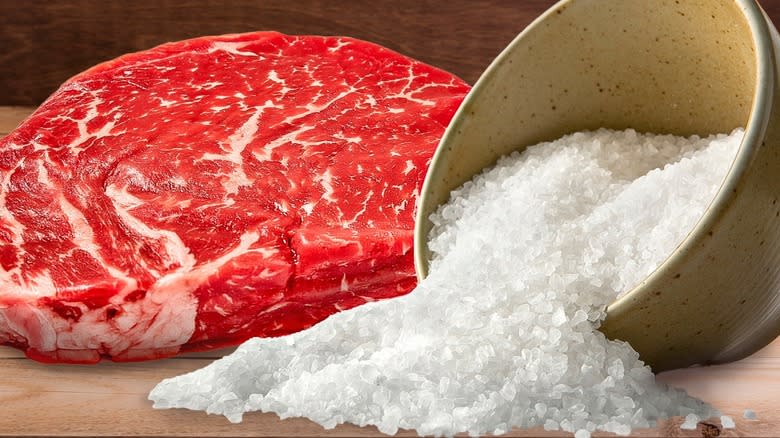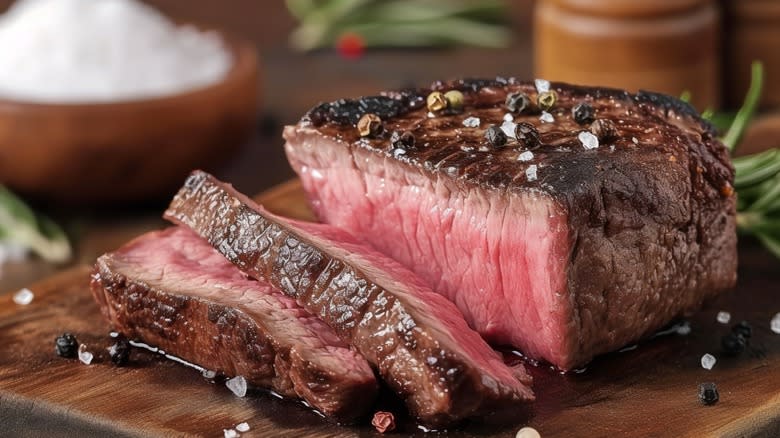A Salt Bake Is The Unorthodox Way To Get Juicier Steaks

Salt-baking, or salt crust, is a culinary practice that dates back to ancient Greece and involves enveloping a protein in a thick crust of coarse salt before cooking it. The method has become popular around the world because of the tender, succulent effect it has on meat that's prone to drying out. The most common application -- salt-baked fish -- works so well because the delicate, flaky meat is notoriously susceptible to overcooking. However, once you try salt-baking your steaks, the juicy, flavorful results will be proof enough that this method works for any type of protein.
To create a salt crust, you can use water or egg white mixed with 2 cups of kosher or non-iodized salt to form a cohesive paste. Then, pack the cut of steak of your choice in the salt paste and grill, smoke, or bake it according to the respective recipe. The salt crust acts as a protective cocoon that seals in the steak's juices and slows the rate of cooking, resulting in a tender and more flavorful steak.
You can envelope the steak or steaks completely by laying them atop a bed of salt paste and forming the crust around it. Some grilled steak recipes recommend leaving the bottom of the steak exposed to the grates, then covering it with salt after flipping the steak to incur char marks. However, you can also remove the salt crust and give your salt-baked steaks a quick sear on both sides.
Read more: Your Guide To The Different Cuts Of Steak
More Tips For Salt-Baking Steaks

If using 2 cups of salt to encrust steaks sounds like a recipe for an overly salty disaster, fear not. Only a small portion of the crust will dissolve into the meat, while the rest of it will harden and slightly brown, assuming the appearance of an igloo. In fact, a salt crust makes for an impressive presentation and is easy and fun to dismantle with the back of a steak knife. Of course, the salt that does seep into your steak is just the right amount to season it.
You can thus leave salt out of any type of seasoning mix or tenderizing steak marinade you want to add to your raw steak before the salt crust. Rub steak in black pepper, paprika, garlic granules, celery seed, and dried herbs for an aromatic, smoky, and spicy mix to balance its umami richness. A blend of paprika, cumin, and oregano would give your steak Mexican flare. You can also add seasoning ingredients to the salt and egg white or water mixture for a more subtle flavor infusion.
Since the salt crust will prevent you from picking up on visual or tactile cues of doneness, a meat thermometer will accurately tell you when to pull your steak off the grill or out of the oven. You can insert a meat thermometer into the thickest part of your steak before salt-packing it to make sure you have an accurate reading.
Read the original article on Tasting Table.


